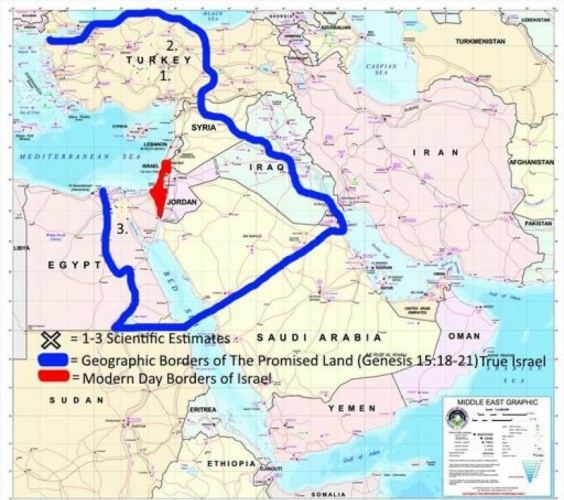"Send men to explore the land of Canaan, which I am giving to the Israelite people; send a man from each of their...

"Send men to explore the land of Canaan, which I am giving to the Israelite people; send a man from each of their ancestral tribes, each a chief among them.
That day the Lord made an alliance with Abram, saying, "To your offspring I cheque this land, from the river of Egypt to the great river, the Euphrates River:
Reside in this land, and I will be with you and Bless you; He assigned all these lands to you and your heirs, fulfilling the oath I swore to your father Abraham.
And the Lord stood beside him and said, "I am the Lord, the God of your father Abraham, and the God of Isaac: the ground on which I will assign to you and your offspring.
I will set your borders from the Sea of Ashes to the Sea of Filistia, and from the desert to the Euphrates; because I will deliver the inhabitants of the earth into your hands, and you will cast them out before you.
The Promised Land (Jewish: Sz), is ensuous: ha'aretz hamuvtakhat; Arabic: s'e' s's's', ''' , translit.: ard al-mi'ad; also known as "The Land of Milk and Honey") is the land that, according to the Tanakh (the Hebrew Bible), was promised and later given by God to Abraham and his descendants, and in modern contexts is more generally understood an image and idea related to both the restored fatherland for the Jewish people and to salvation and liberation.
The promise was made first to Abraham (Genesis 15:18-21), then confirmed to his son Isaac Genesis (26:3), and then to The Son of Isaac Jacob (Genesis 28:13). The Promised Land has been described in terms of territory from the River of Egypt to the Euphrates River (Exodus 23:31). A small area of the former Canaanite land and land east of the Jordan River was conquered and occupied by their descendants, the Israelites, after Moses led the Exodus out of Egypt (Numbers 34:1-12), and this occupation was interpreted as God's fulfillment of promise (Denomeilimia 1:8). Moses anticipated that God could later give the land of the Israelites that reflected the boundaries of God's original promise, if they were obedient to the covenant (Deuteronomy 19:8-9).
Boundaries of the "Promised Land" indicated in the Book of Numbers (chapter 34)The southern boundary. "Then your southern quarter will be from the zin desert along the coast of Edom, and your southern border will be the southernmost coast of the salty sea to the east : (v. 4) And the border will turn from south to ascent of Akrabbim, and will pass to . , and will go to Hazar-addar, and will pass to Azmon : (v. 5) And the border will take a compass from Azmon to the river of Egypt, and the andi from it will be to the sea. "And as for the western border, you will also have the great sea for a border: this will be your western border. "And this will be your northern border: from the great sea you will point out for you Mount Hor: (v. 8) from Mount Hor you must indicate your border to the entrance of Hamath; and the exit from the border will be towards zedad : (v 9) And the border will continue to ziphron, and the exits from it will be in Hazar-enan : this will be your northern border. "And you will indicate your eastern border from Hazar-enan to Shepham: (v. 11) And the coast will descend from Shepham to Riblah, on the east side of Ain; and the border goes down, and must reach to the side of the sea of Chinnereth to the east : (v. 12) And the border will come down to Jordan, and the andibi to the salt sea will be to the salt sea : this will be your land with the coasts around. : as bounded to the south by the desert stretch called Sina, between the Dead Sea and the city of Kadesh-barnea, [which is located with the Arabah to the east] and continues to the west, up to the river of Egypt, which discharges into the open sea near the city of Rhinocolara; as delimited to the west by the sea along the coasts of Palestine, Phoenicia, Coele-Syria and Cilicia; as bounded to the north by the circle formed by the Taurus Mountains and zephyro and extending to Hamath, called Epiphany-Syria; as bounded to the east by the city of Antioch Hippo and Lake Kinneret, now called Tiberias, and then the Jordan River that discharges into the salt sea, now called dead sea.